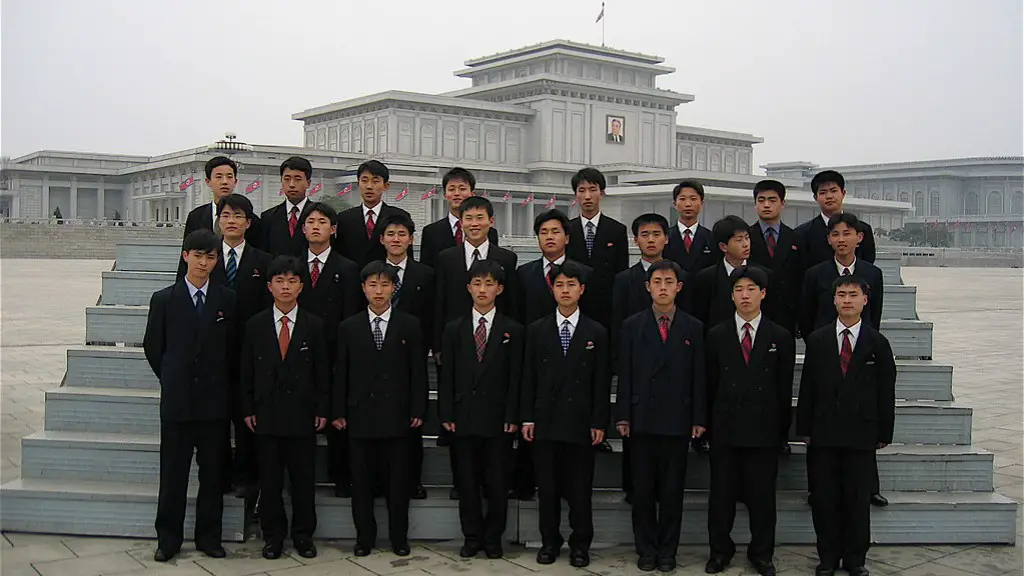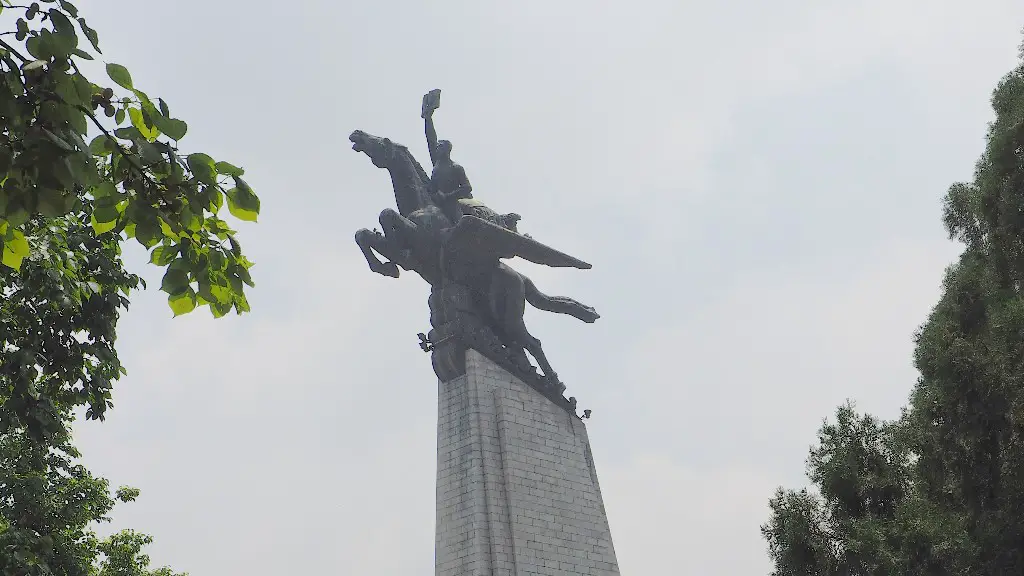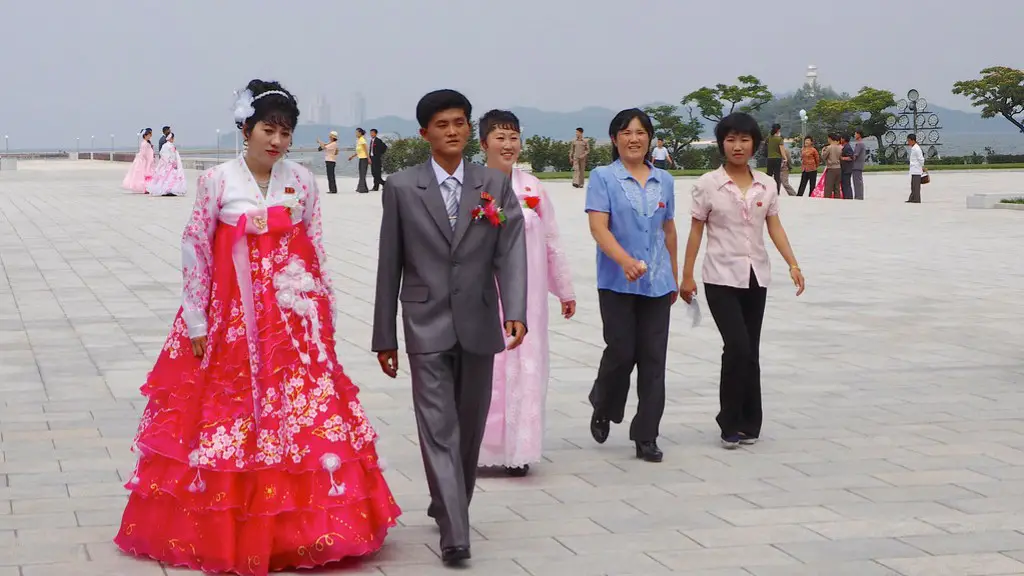Background Information
North Korea’s nuclear weapons program has been a source of growing concern and tension among the international community since its development in the early 1990s. The country has conducted six known nuclear tests, the last of which occurred in September 2017. Prior to this, the most recent test had taken place in 2013. All of the tests have been conducted underground in the Punggye-ri Nuclear Test Facility, located in Hamgyong-bukdo, North Korea. The site is located in a remote, mountainous area near the Chinese border, and is surrounded by dense forests that protect it from outside observation.
Data and Perspectives
The United Nations Security Council has imposed multiple sanctions and resolutions on North Korea in response to its nuclear tests. However, the country continues to develop and refine its nuclear arsenal in spite of these international efforts. North Korea has reportedly tested plutonium for nuclear weapons, as well as uranium-enrichment technology. There are fears that North Korea could soon develop more advanced nuclear weapons, including hydrogen bombs.
South Korea and the United States, who are both parties to the Nonproliferation Treaty (NPT), are concerned about the weapons program in North Korea and have conducted joint monitoring operations to try to detect any signs of nuclear tests. However, due to the nature of the testing facility, experts find it difficult to completely verify all nuclear activity in the area. Some speculate that underground tunneling is being used to conduct additional tests undetected.
Analysis
It is clear that the North Korean government has become increasingly aggressive in its weapons development program over the past few years. Despite numerous attempts to contain and deter their nuclear tests, the country still continues to progress in its efforts. While there is some uncertainty as to the current state of their nuclear arsenal, it is clear that further efforts are needed to impede their weapons development.
At the same time, it is important to recognize that the North Korean government is in a precarious situation. The leadership is faced with a population in danger of starvation and with a hostile external environment. It is likely that this has contributed to their desire to develop a more powerful nuclear arsenal, as a way to discourage any potential aggression from foreign nations.
International Efforts
The international community has been working hard to deal with the North Korean nuclear crisis. The United Nations Security Council has enacted sanctions on North Korea in an attempt to limit its weapons development and deter nuclear testing. Other nations have also attempted to convince North Korea to end its nuclear program through diplomacy and negotiations.
However, despite these efforts, progress has been slow. North Korea has shown little willingness to change its stance on the matter. This has caused international tensions to remain high and has made the situation increasingly difficult to resolve.
Consequences
The most immediate consequence of North Korea’s nuclear weapons program is the threat it poses to the security of the surrounding nations. The country has a history of aggression and a large stockpile of conventional weapons. If it is found to possess a nuclear arsenal, then there is the risk of these weapons being used in an offensive action.
Furthermore, continued development of nuclear weapons in North Korea will likely lead to further regional instability and an increased risk of conflict. Unless some resolution to the current crisis is found, then the crisis could easily escalate into something far worse.
Public Perception
Public perception of the North Korean nuclear situation is another important factor in trying to solve the crisis. Due to the secretive nature of the North Korean government, it is difficult to gauge how much the public knows about the issue. This is particularly true in regards to outside nations, as there is a general lack of reliable information about North Korea.
Nevertheless, it is clear that North Korea’s nuclear program is a source of international concern. Nations around the world are becoming increasingly worried that the situation could quickly spiral out of control. This has caused them to put more emphasis on attempting to contain the spread of nuclear weapons from North Korea.
Technological Aspects
As North Korea has continued to develop its nuclear program, it has become increasingly sophisticated. The country is believed to have a wide range of different nuclear weapons, including fission devices, thermonuclear weapons, and hydrogen bombs. It is also thought to be making progress on miniaturizing its warheads so that they can be mounted on ballistic missiles.
At the same time, the underground tunnels at the Punggye-ri Nuclear Test Facility have become increasingly advanced over the years. While monitoring efforts have been able to detect most of the nuclear tests, the subsequent analysis has shown a growing sophistication in the technology used. This has caused concern in the international community, as it indicates that the North Korean government is progressing in its nuclear weapons program.
International Assistance
In order to tackle the North Korean nuclear crisis, international assistance is needed. This would take the form of increased cooperation between the involved parties, such as the United Nations Security Council and nations directly affected by North Korea’s actions.
Furthermore, it is essential that North Korea receive the aid it needs to end its nuclear program. For example, it could benefit from economic assistance and diplomatic negotiations to help open up the country and alleviate some of the pressure the population is facing. Increased support from the international community could help convince the North Korean government to put an end to their nuclear program and join the international community in peace.
Political Solutions
Since diplomacy and negotiations are proving to be slow and ineffective, it is becoming increasingly important that other political solutions to the crisis are explored. For example, it has been suggested that a nuclear-free zone could be established in the region which would limit the spread of weapons. This could help to reduce the risk of conflict and provide a framework for resolving any disputes.
At the same time, the United Nations Security Council could consider further sanctions or other punitive measures against North Korea. It is important, however, that these are used strategically and that they do not harm the civilian population. Ultimately, it is essential that all involved parties work together to find a solution that is in the best interests of all.


